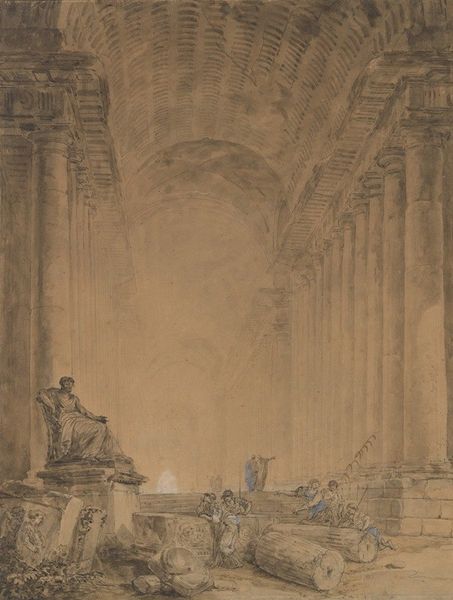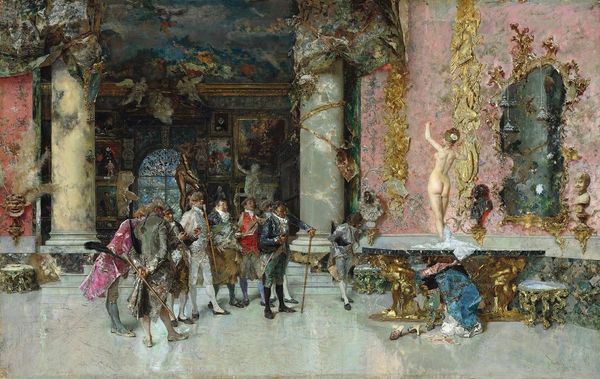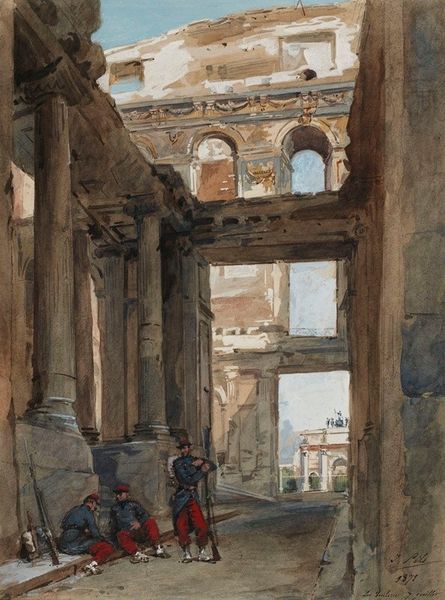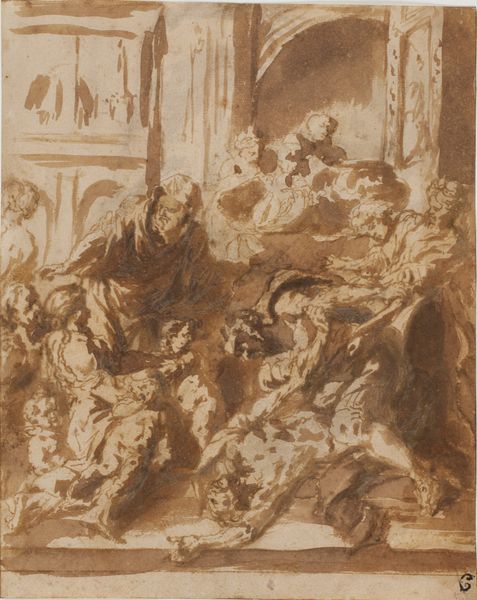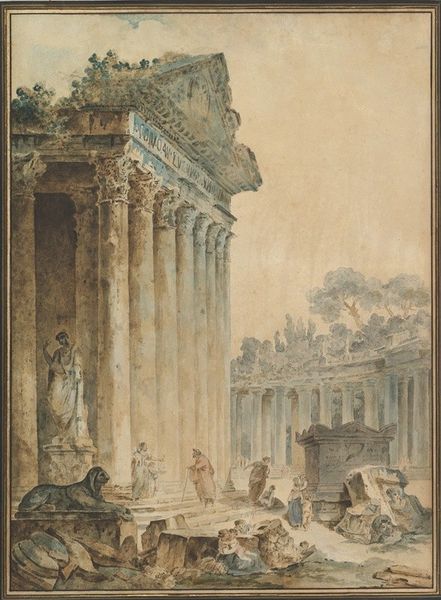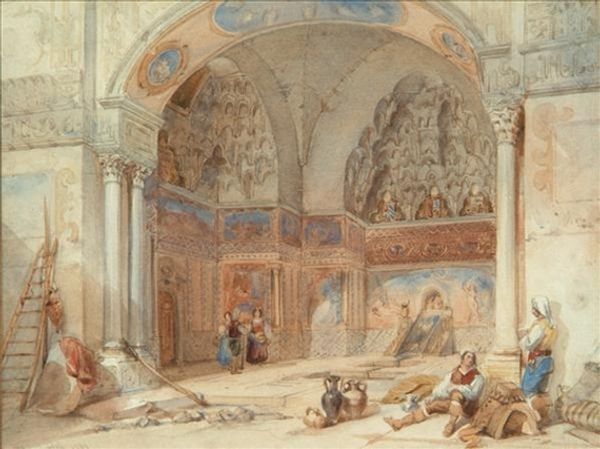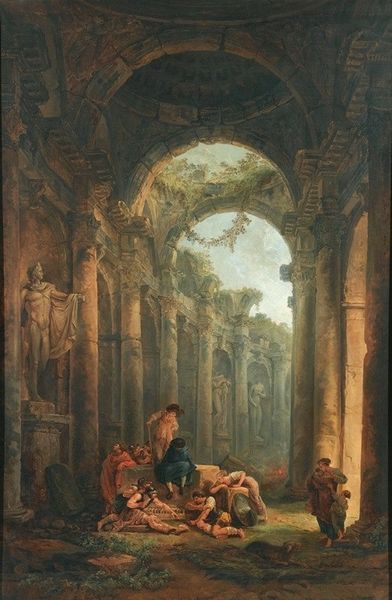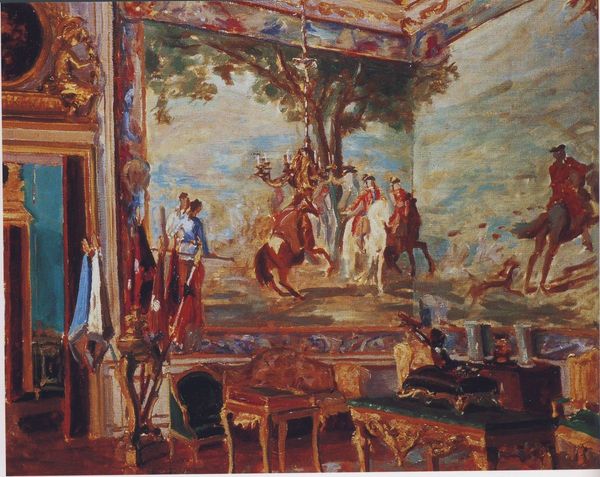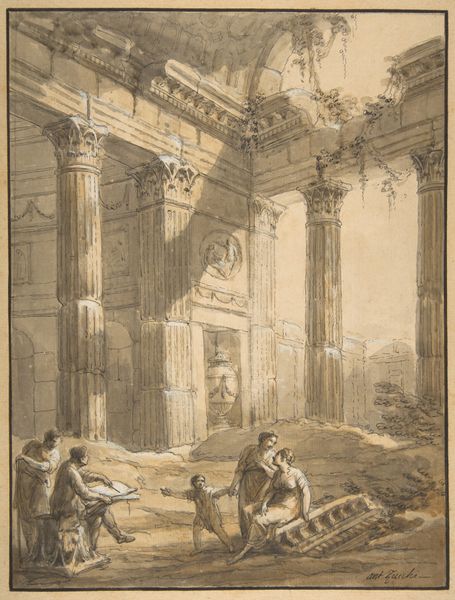
Copyright: Public Domain: Artvee
Curator: Pils' 1871 watercolor, "Ruins of the Salon de Mars in the Palace of Saint-Cloud," immediately evokes a somber mood with its muted tones and depiction of devastation. Editor: There's an undeniable elegance, even in its ruined state. The architectural structure, though skeletal, still displays a clear order and articulation through its vertical columns and the placement of ornamentation like the cornice and figures. Curator: Indeed, but it's crucial to consider the painting’s historical context. Painted just after the Franco-Prussian War and the Paris Commune, it is a powerful statement on the vulnerability of power, privilege, and the high culture the palace represented. Those soldiers represent a newly restructured, vulnerable France. Editor: Yes, that historical dimension adds another layer to how one might visually read this work. But before that, observe the light; note how Pils masterfully plays with light and shadow to highlight the textural contrast between the smooth surfaces of the remaining ornate plasterwork, for instance, and the rough, broken edges of the collapsed walls. This is classic romanticism in its visual form, playing with affect. Curator: I agree with your comments about romanticism, but would stress the visual serves also as a social critique. We can read Pils as questioning the notion of progress and civilization, painting what is left after a cataclysmic political upheaval. Think, for example, about who is and isn't represented. Editor: That said, consider the perspective that the artist used. It's not quite linear, but seems to skew, focusing our eyes on the void through the room while making sure we focus on all of the ornate, baroque detail. That broken frame feels heavy. Curator: It serves as a mirror, I would say, reflecting on who France wanted to be in light of who she had been and would be. Thank you for focusing on how to think of Pils through this intersection of style, material and historical event. Editor: Thank you, it is very rewarding to interpret artworks through varied yet complementary methods.
Comments
No comments
Be the first to comment and join the conversation on the ultimate creative platform.

